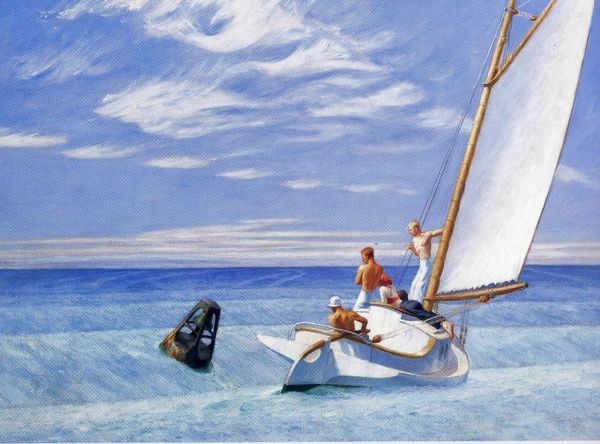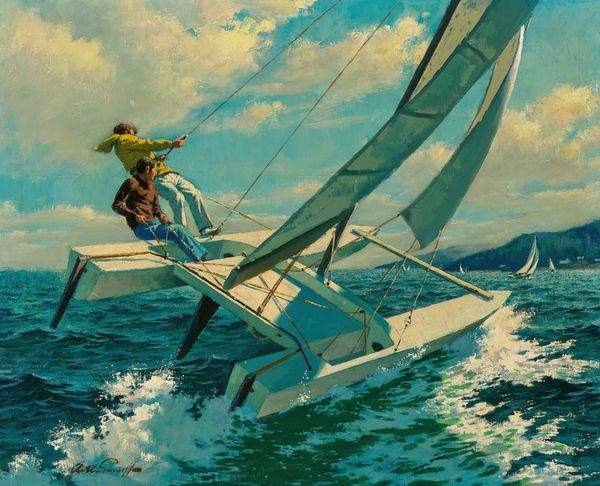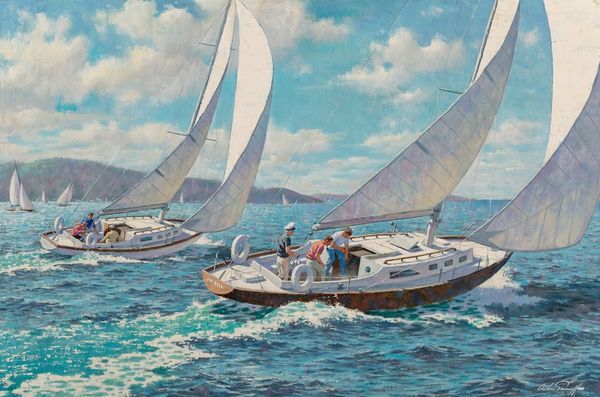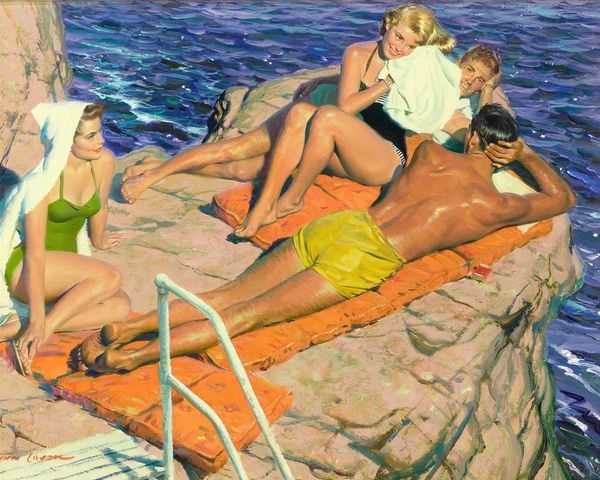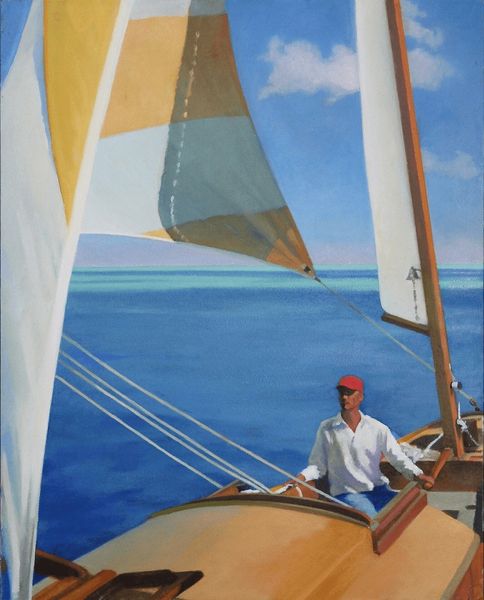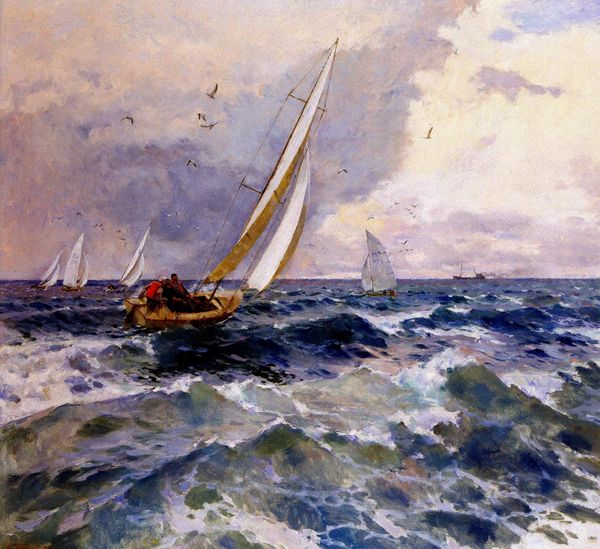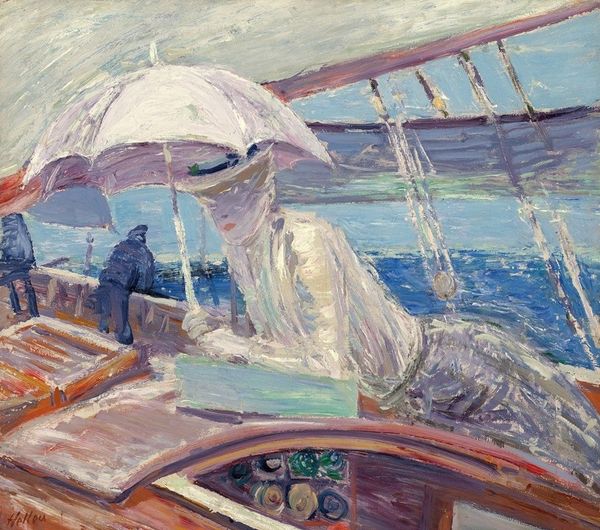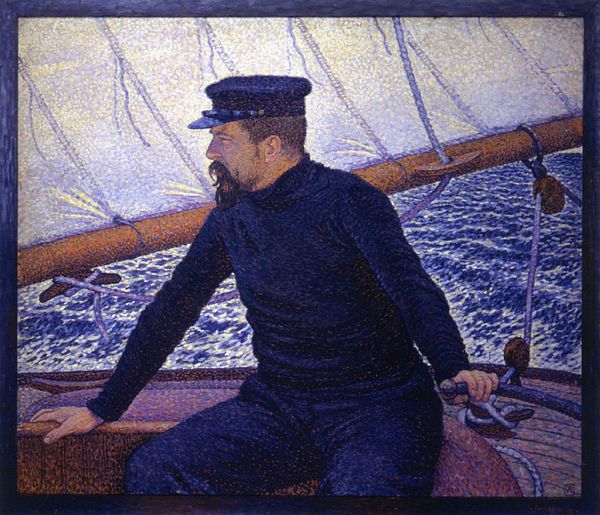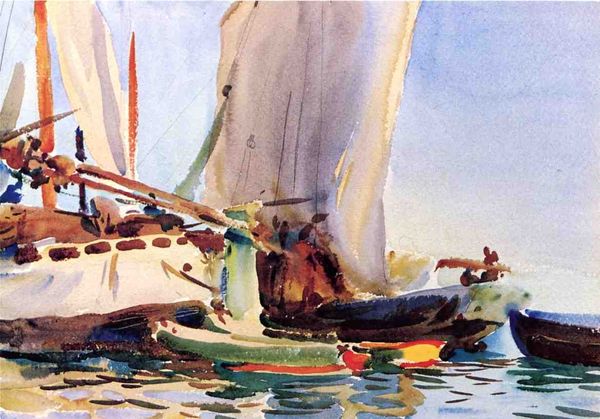
Copyright: Public Domain: Artvee
Editor: Here we have Julius Leblanc Stewart's "Yachting the Mediterranean" from 1896, an oil painting that just exudes breezy leisure. What I immediately notice is how the viewpoint pulls me right onto that yacht. How does this work strike you? Curator: Ah, Stewart! He had such a knack for capturing the fleeting moments of belle-époque life. You’re right; the composition invites us to almost feel the spray of the Mediterranean. But look closer - notice how the seemingly spontaneous scene is carefully constructed, with the figures arranged to lead our eye through the space. It’s like a snapshot of the upper class at play, a world of white dresses and windswept hair. Does it feel truly carefree, though, or is there a hint of something else lurking beneath the surface? Editor: That’s an interesting point about it feeling constructed; it does seem to romanticize this idea of leisure, but you can see some work in the detailing of the yacht. And this maybe sounds silly, but how on earth did they keep those hats on? Curator: Indeed! And the detailing, particularly on the boat itself, shows a reverence for these machines of leisure and power. As for the hats... magic, I suspect! Or maybe incredibly elaborate hat pins. But think about what they represent - status, elegance, the very image of a certain class and era. Beyond the surface, consider the artist's personal life. He moved to Paris, immersed in this lifestyle, reflecting, perhaps, a longing for or commentary on this social stratum? Editor: I hadn’t thought about the artist’s relationship to the subject matter. The whole thing now feels much more layered! Curator: Precisely! It’s a painting that whispers secrets if you're willing to listen. Art is rarely just what meets the eye; it's the questions it provokes. Editor: Definitely given me something to think about – the scene's beauty and social undercurrents!
Comments
No comments
Be the first to comment and join the conversation on the ultimate creative platform.
